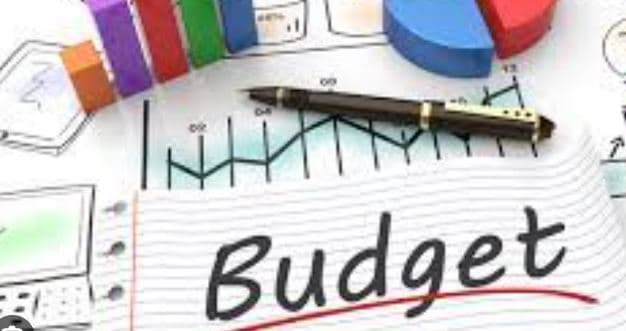7 Easy Ways to Build an Emergency Fund
There are so many reasons (medical emergencies, job loss, unexpected house/car repairs) why you need a good emergency fund. In today’s uncertain world anything is possible. It is never ok to live pay check to pay check. You might say, you know its easy for you to sit and preach but my situation is different, I make much less than what I need for a monthly expense. Believe me, I hear you but I also know that there is a way to get out of the rabbit hole you are in, the first step is understand your income and expenses and set aside some money for a rainy day emergency fund.
Below are some easy steps you can follow to understand what emergency fund is, how to build one and where to save one so you are prepared to weather any storm that comes your way.
What is an emergency fund?
An emergency fund is a reserved amount of money set aside specifically for unexpected financial expenses or emergencies. It serves as a safety net to cover unanticipated costs such as medical bills, home repairs, or job loss. The purpose of an emergency fund is to provide financial security and prevent individuals or families from going into debt when faced with unforeseen circumstances. Below are 7 easy steps to follow to set up your emergency fund.
#1: How much emergency fund should I have?

First, set a realistic Goal: One of the first step in building an emergency fund is setting a realistic savings goal. At a minimum, aim to save three to six months’ worth of living expenses. This amount will provide a buffer during financial emergencies and give you peace of mind. Consider factors such as your monthly expenses, income stability, and family size when determining your goal.
Now, if you don’t already know calculate your monthly expenses by looking at all the bills you pay in a month and add some buffer for those unplanned expenses that always creep up. Break down the total amount into smaller monthly or weekly targets to make it more achievable. Having a clear goal will help you stay motivated and focused on saving for emergencies
#2: Create a Budget

Creating a budget is an essential part of managing your finances effectively. It allows you to assess your income and expenses, identify areas where you can cut back, and allocate funds towards your emergency fund. Start by listing all your income sources and tracking your monthly expenses. Categorize your expenses into fixed (rent/mortgage, utilities) and variable (groceries, entertainment) costs.
Look for areas where you can reduce spending and redirect those funds towards your emergency savings. Consider cutting back on non-essential expenses like dining out, subscription services, or impulse purchases. By creating a budget and sticking to it, you’ll have a better understanding of where your money is going and be able to save more efficiently.
#3: Automate Savings
Taking advantage of technology can make saving for emergencies easier and more consistent. Set up an automatic transfer from your checking account to your emergency fund. This way, a portion of your income will be saved without any effort on your part. Contact your bank or financial institution to set up the recurring transfer. Automating your savings ensures that you prioritize saving for emergencies and removes the temptation to spend the money elsewhere. It’s a convenient and effective way to build your emergency fund gradually over time.
#4: Trim Unnecessary Expenses

To accelerate your emergency fund growth, it’s important to identify and cut unnecessary expenses. Evaluate your lifestyle and spending habits to identify areas where you can reduce or eliminate expenses. Review your monthly bills, subscriptions, and memberships. Consider alternatives or negotiate lower rates with service <. Look for cost-saving opportunities such as buying in bulk, using coupons, or opting for generic brands. Bring your lunch to work instead of eating out, and cut out that gym membership you hardly use. Small changes in your daily habits can add up to significant savings over time. Redirect the money you save from trimming unnecessary expenses directly into your emergency fund.
#5: Generate Additional Income

Exploring opportunities to earn extra money can provide a significant boost to your emergency fund. Consider freelancing, part-time jobs, or monetizing your hobbies and skills. Look for freelance gigs in your field of expertise or explore online platforms that offer freelancing opportunities. You can also consider taking on a part-time job or finding temporary work during your free time.
Additionally, you can sell unused items through online marketplaces or organize a garage sale. Direct the additional income you earn towards your emergency fund to accelerate its growth. By diversifying your income sources, you’ll have more financial stability and a faster path to building a solid emergency fund.
#6: Review and Adjust Regularly
Building an emergency fund is an ongoing process. Regularly reviewing and adjusting your savings strategy is crucial to ensure you stay on track. Revisit your budget periodically and assess your financial situation. If your income increases or your expenses decrease, consider allocating the surplus towards your emergency fund. As your financial circumstances change, it’s important to adjust your savings goals accordingly.
Regular reviews will help you identify any areas where you can save more or make necessary adjustments to reach your emergency fund target. By staying proactive and adaptable, you can maximize the growth of your emergency fund.
#7: Keep Funds Separate and Accessible
To ensure the effectiveness of your emergency fund, it’s important to keep the funds separate and easily accessible. Open a dedicated account specifically for emergencies, separate from your regular checking or savings account. Consider a high-yield savings account or a money market account, which offers both accessibility and some interest growth. These accounts typically have higher interest rates than regular savings accounts, allowing your emergency fund to grow over time.
Having a separate account for emergencies will prevent you from dipping into the funds for non-emergency expenses. Additionally, it provides a clear overview of your emergency fund’s progress and allows you to track your savings more effectively.
Conclusion:
Now that you understand the steps, remember that building an emergency fund may require discipline and commitment, but the peace of mind it brings is priceless. By following these seven easy steps, you can create a financial safety net that will protect you and your family during unexpected situations. Start implementing these strategies today and take control of your financial future. Remember, it’s never too early or too late to start saving for emergencies.

Hi there! My name is Madhavi. Newgrowthzone is all about reaching your full potential. If you are interested in getting out of your comfort zone and reaching for your dreams, keep reading!







